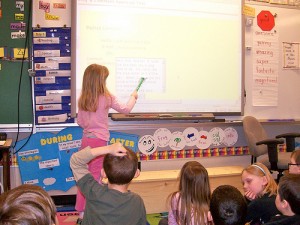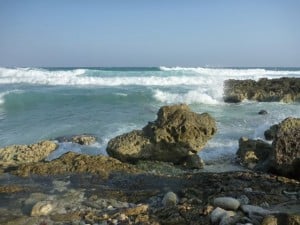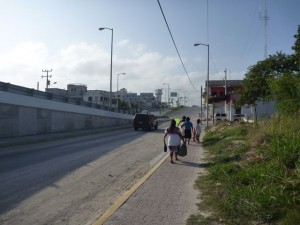I’m back from a year away with no plans to change back the name of my blog. I’ve decided that I like the idea of keeping it as a Time Out space, a chance to step away and review what is happening around me as I head back into the classroom. I’ve had a three and a half year hiatus, a chance to learned so much about technology, learning, teaching and myself. I’ve been traveling extensively, volunteering abroad, learning a new language and just prior to that, working in the teacher education arena for three years. My goal now is to really put what I’ve been learning and “preaching” into practice, particularly the reflective practice part here on this Time Out blog. I’m truly pumped about the chance to gently remodel my own teaching in ways that I’ve watched so many brilliant, fascinating, energetic teachers do over the past few years.
To start, I’ve accepted a position in a classroom with a mounted Smartboard. Today I received an email from one of my former adult students about his upcoming research into the pedagogy behind the use of such technology. He wonders if they all about bells and whistles or is there really a benefit to pedagogic practice? From my conversation with him I’ve taken on a challenge to myself: How can I effectively use the Smartboard in a way that is learner-centered, in a manner that isn’t simply about the teacher transmitting information?
Personally I believe that there is a huge value to the use of the interactive white board. Initially the motivation and engagement of the students alone is worthwhile, but clearly the novelty wears off quickly, particularly if students are simply watching the teacher “play” with the “toy.” To be useful over any length of time, the tool needs to be a tool for the students to use. To this point, working always with adult learners, I’ve almost never touched the Smartboard myself. When I would visit classrooms where I offered to demonstrate the IWB’s use for the teacher, I always attempted to do the whole lesson without ever touching the board myself. Usually, other than sorting out initial glitches in the connection I could manage. However, on one-off situations such as that, always a novelty, my hand’s off approach was easy to do. So the question will be, can I really teach with a Smartboard as a tool for the students over the course of the school year?
I’ll keep you posted.





